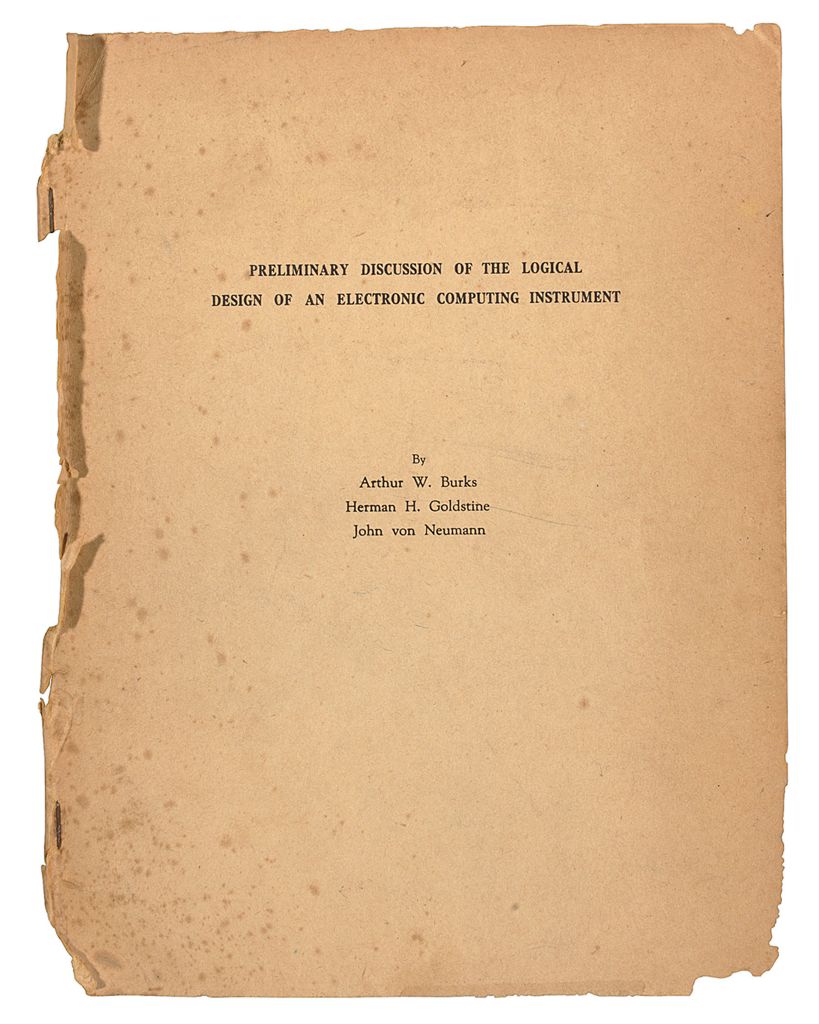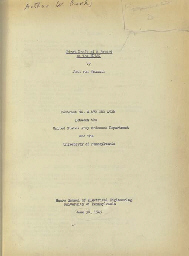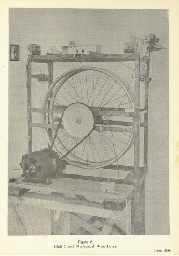VON NEUMANN, John (1903-1957), Arthur W. BURKS (1915- ), and Herman H. GOLDSTINE (1913- ). Preliminary Discussion of the Logical Design of an Electronic Computing Instrument . Part I, Volume I. Princeton, NJ: The Institute for Advanced Study, 28 June 1946. 4 o. Printed by offset from typescript. Stapled into manila wrappers (some losses to spine, slight soiling). [ With :] VON NEUMANN, John, and Herman H. GOLDSTINE. Planning and Coding of Problems for an Electronic Computing Instrument: Report on the Mathematical and Logical Aspects of an Electronic Computing Instrument . Part II, Volumes I, II, and III. Princeton, NJ: Institute for Advanced Study, 1947-1948. 3 volumes, 4 o. Printed by offset from typescript. (Occasional pencilled annotations.) Stapled into manila wrappers (minor browning and soiling). 4 volumes together in a drop-back cloth box. FIRST EDITIONS OF THE FIRST PUBLICATIONS TO OUTLINE A DESIGN FOR A COMPUTER WITH A STORED, PROGRAMMABLE MEMORY, THE FOUNDATION OF ALL FURTHER DEVELOPMENTS IN AUTOMATED COMPUTING. Von Neumann, a mathematician who had made important contributions to quantum theory and who invented game theory, consulted for the United States government on a variety of scientific projects, including the development of the atomic bomb, during World War II and after. He became interested in the development of electronic computing machines because of the length of time it took to solve complex equations using the desk calculators commonly employed during the 1940s. These four papers outline the plan for a computer subsequently constructed by Von Neumann, Goldstine and Burks at the Institute for Advanced Study in Princeton, where Von Neumann was a professor from 1933 until his death in 1957. Here, for the first time, it was specified that a general-purpose computing machine should consist of four essential components, the "arithmetical unit" or central processing unit, the memory, the "control organ" or program, and an input/output device. The papers also justified the use of the binary system, which still underlies all computing, rather than the decimal system, as a basis for calculations and for programming. Most importantly, they explained how programs can be encoded, stored, and operated through the use of procedures that include subroutines and variable addresses. These four papers, and the computer whose design they outline, were tremendously influential. According to Goldstine, in a history of computing published in 1972, "This series was in many ways the blueprint for the modern computer. It contained a very detailed discussion of how a computer should be organized and built as well as how to program it. The papers describe the so-called von Neumann machine, a structure which is, with small modifications, the one still used in virtually all modern computers" ( The Computer from Pascal to Von Neumann , Princeton 1972, p. 256). Arthur Burks, in a re-edition of Von Neumann's publications on computing, remarked that "These reports ... were widely circulated and were quite influential. Indeed, they were about the only documents on programming methodology available in the English-speaking world until 1951 ..." ( Papers of John von Neumann on Computing and Computer Theory , Cambridge Mass. 1987, p. 146). RARE. (4)
VON NEUMANN, John (1903-1957), Arthur W. BURKS (1915- ), and Herman H. GOLDSTINE (1913- ). Preliminary Discussion of the Logical Design of an Electronic Computing Instrument . Part I, Volume I. Princeton, NJ: The Institute for Advanced Study, 28 June 1946. 4 o. Printed by offset from typescript. Stapled into manila wrappers (some losses to spine, slight soiling). [ With :] VON NEUMANN, John, and Herman H. GOLDSTINE. Planning and Coding of Problems for an Electronic Computing Instrument: Report on the Mathematical and Logical Aspects of an Electronic Computing Instrument . Part II, Volumes I, II, and III. Princeton, NJ: Institute for Advanced Study, 1947-1948. 3 volumes, 4 o. Printed by offset from typescript. (Occasional pencilled annotations.) Stapled into manila wrappers (minor browning and soiling). 4 volumes together in a drop-back cloth box. FIRST EDITIONS OF THE FIRST PUBLICATIONS TO OUTLINE A DESIGN FOR A COMPUTER WITH A STORED, PROGRAMMABLE MEMORY, THE FOUNDATION OF ALL FURTHER DEVELOPMENTS IN AUTOMATED COMPUTING. Von Neumann, a mathematician who had made important contributions to quantum theory and who invented game theory, consulted for the United States government on a variety of scientific projects, including the development of the atomic bomb, during World War II and after. He became interested in the development of electronic computing machines because of the length of time it took to solve complex equations using the desk calculators commonly employed during the 1940s. These four papers outline the plan for a computer subsequently constructed by Von Neumann, Goldstine and Burks at the Institute for Advanced Study in Princeton, where Von Neumann was a professor from 1933 until his death in 1957. Here, for the first time, it was specified that a general-purpose computing machine should consist of four essential components, the "arithmetical unit" or central processing unit, the memory, the "control organ" or program, and an input/output device. The papers also justified the use of the binary system, which still underlies all computing, rather than the decimal system, as a basis for calculations and for programming. Most importantly, they explained how programs can be encoded, stored, and operated through the use of procedures that include subroutines and variable addresses. These four papers, and the computer whose design they outline, were tremendously influential. According to Goldstine, in a history of computing published in 1972, "This series was in many ways the blueprint for the modern computer. It contained a very detailed discussion of how a computer should be organized and built as well as how to program it. The papers describe the so-called von Neumann machine, a structure which is, with small modifications, the one still used in virtually all modern computers" ( The Computer from Pascal to Von Neumann , Princeton 1972, p. 256). Arthur Burks, in a re-edition of Von Neumann's publications on computing, remarked that "These reports ... were widely circulated and were quite influential. Indeed, they were about the only documents on programming methodology available in the English-speaking world until 1951 ..." ( Papers of John von Neumann on Computing and Computer Theory , Cambridge Mass. 1987, p. 146). RARE. (4)











Testen Sie LotSearch und seine Premium-Features 7 Tage - ohne Kosten!
Lassen Sie sich automatisch über neue Objekte in kommenden Auktionen benachrichtigen.
Suchauftrag anlegen